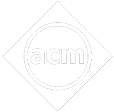- Written By
Praveen Sahu
- Last Modified 25-01-2023
Distillation: Definition, Types, Processes, Uses
Distillation: Petrol, Diesel, Kerosene, etc, are different products obtained from petroleum. Are these liquids miscible? Can we separate them by filtration, evaporation, sublimation, distillation, etc.? Which method is used to separate them? What is the principle behind it? Going further, you will be satisfied with finding the answer to all the doubts and understanding the topic distillation.
Applications of fractional distillation:
- It is used to separate crude oil in the petroleum industry into various useful fractions such as gasoline, kerosene, diesel, lubricating oil, etc.
2. It is also used to separate acetone \(\left( {{\rm{b}}.{\rm{p}}.{\rm{ }}329\,{\rm{K}}} \right)\) and alcohol \(\left( {{\rm{b}}.{\rm{p}}.{\rm{ }}338\,{\rm{K}}} \right)\) from pyroligneous acid obtained by destructive distillation of wood.
Distillation Under Reduced Pressure or Vacuum Distillation
This method is used for the purification of high boiling liquids and liquids which decompose at or below their boiling points.
Principle
A liquid boils when its vapour pressure becomes equal to the external pressure. The same liquid would boil at a lower temperature if the pressure acting on it is reduced. Since the liquid now boils at a lower temperature, its decomposition does not occur. On reducing the pressure of \(10\) to \(20\,\,{\rm{mmHg}},\) the boiling point is reduced to about \(100{\rm{ degrees}}.\)
Applications of distillation under reduced pressure:
- It is used in the concentration of sugar cane in the sugar industry.
- Glycerol which decomposes at its boiling point \(\left( {563\,{\rm{K}}} \right)\) can be distilled without decomposition at \({453\,{\rm{K}}}\) under \(12\,{\rm{mm}}\,{\rm{Hg}}\) pressure.
Steam Distillation
This method of separation is useful in the purification of organic compounds from non-volatile organic or inorganic impurities. This method applies to only those compounds which are volatile in steam, insoluble in water, possess a vapour pressure of about \(1-15\,{\rm{mm}}\,{\rm{Hg}}\) at \(373\,{\rm{K}},\) and contain non-volatile impurities.
Principle
In this method, a mixture of two immiscible liquids, i.e., water and an organic liquid is heated. Each would exert its vapour pressure independently of the other and the mixture will begin to boil at a temperature when the sum of the vapour pressure of the organic liquid \(\left( {{{\rm{p}}_1}} \right)\) and that of water \(\left( {{{\rm{p}}_2}} \right)\) becomes equal to the atmospheric pressure \(\left( {\rm{p}} \right).\)
\({\rm{p}} = {{\rm{p}}_1} – {{\rm{p}}_2}\)
Unless the vapour pressure of water or that of the organic liquid is zero, the temperature at which the mixture boils must be lower than the normal boiling point of both the organic liquid and the water. In other words, the organic liquid boils at a temperature lower than its normal boiling point and hence the decomposition is avoided.
Procedure:
The impure organic compound mixed with water is taken in a round bottom flask and steam is passed. The mixture starts boiling when the combined vapour pressure becomes equal to the atmospheric pressure. At this temperature, steam mixed with vapours of the compound passes over to the condenser where they are condensed and collected in the receiver. The distillate contains the desired substance and water which can easily be separated with the help of a separating funnel.
Application of steam distillation:
This method is used for purification of o- nitrophenol, bromobenzene, aniline, nitrobenzene, essential oils, turpentine oil, etc.
Summar
In this article, you have enlightened with distillation, different types of distillation, and principles. You can make use of this knowledge, in separating different types of miscible liquid with the difference in their boiling point.
FAQs on Distillation
Q.1. What is meant by the distillation process?
Ans: Distillation is the process of conversion of a liquid into vapours by heating followed by condensation of the vapours.
Q.2. What are the 3 steps of distillation?
Ans: The three important steps of distillation are:
a) Heating the given mixture taken in the distillation flask and conversion of liquid into vapour.
b) Cooling this vapour into liquid by passing the vapours through the condenser.
c) Collecting the distillate in a separate container.
Q.3. Which mixtures can be separated by distillation?
Ans: Distillation is used to separate the miscible liquids that boil without decomposition.
Q.4 What are the 4 types of distillation?
Ans: The 4 types of distillation are:
a) Simple distillation
b) Fractional distillation
c) Distillation under reduced pressure or vacuum distillation
d) Steam distillation
Q.5. What is the difference between simple and fractional distillation?
Ans: In simple distillation, liquids in the mixture differ in the boiling point of around 50K whereas, in fractional distillation, liquids differ in the boiling point of 10-20K.










































